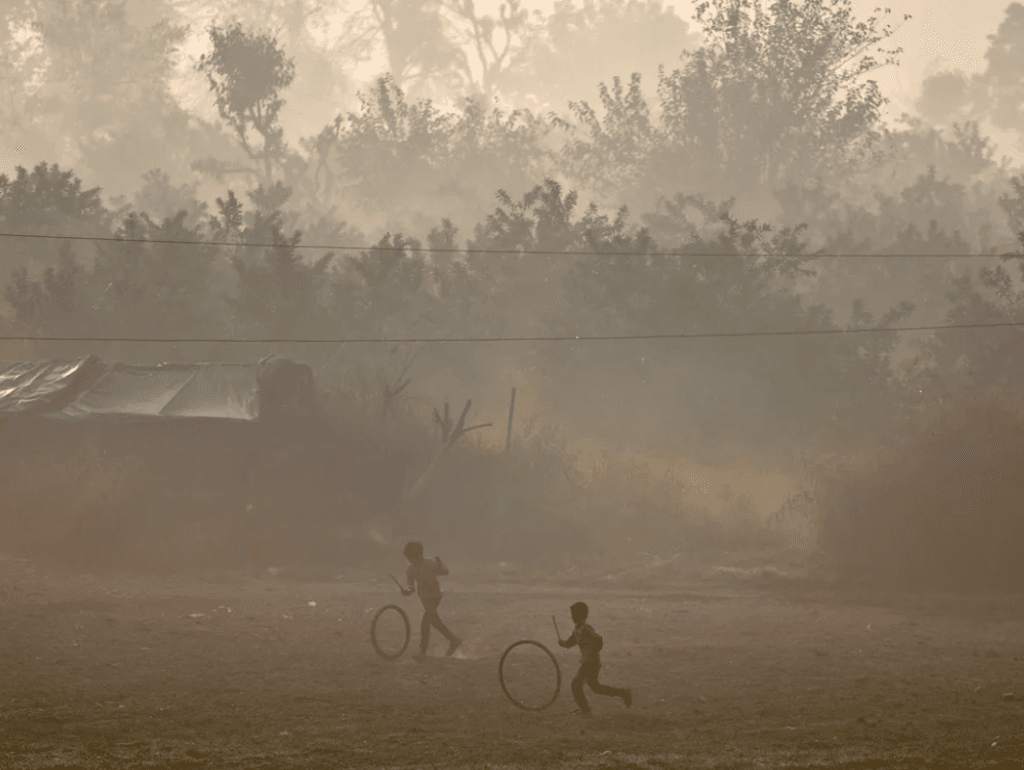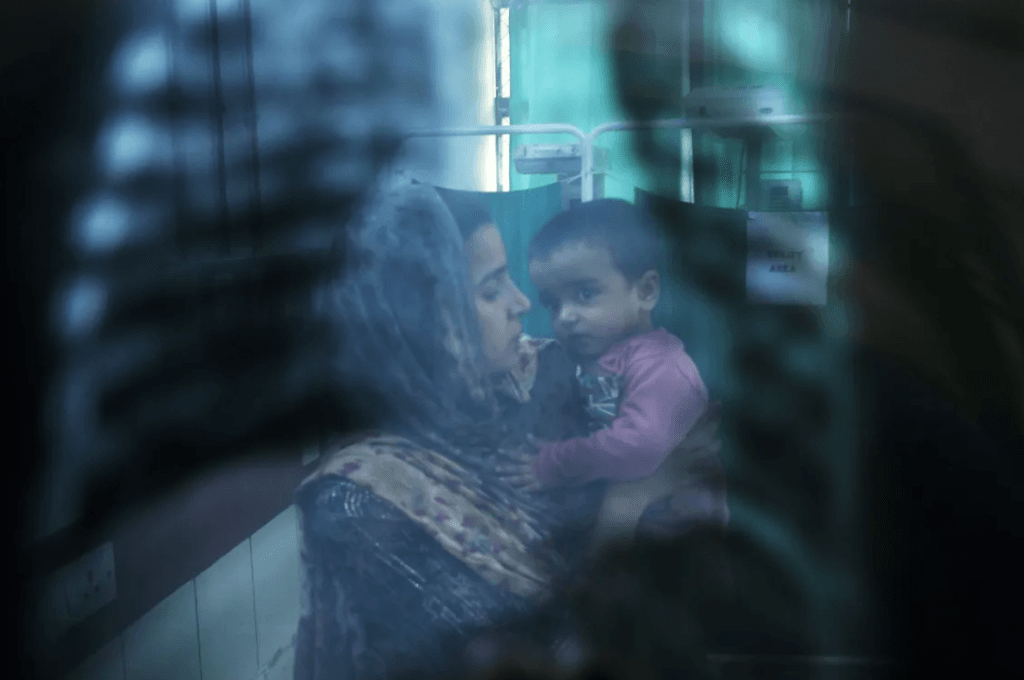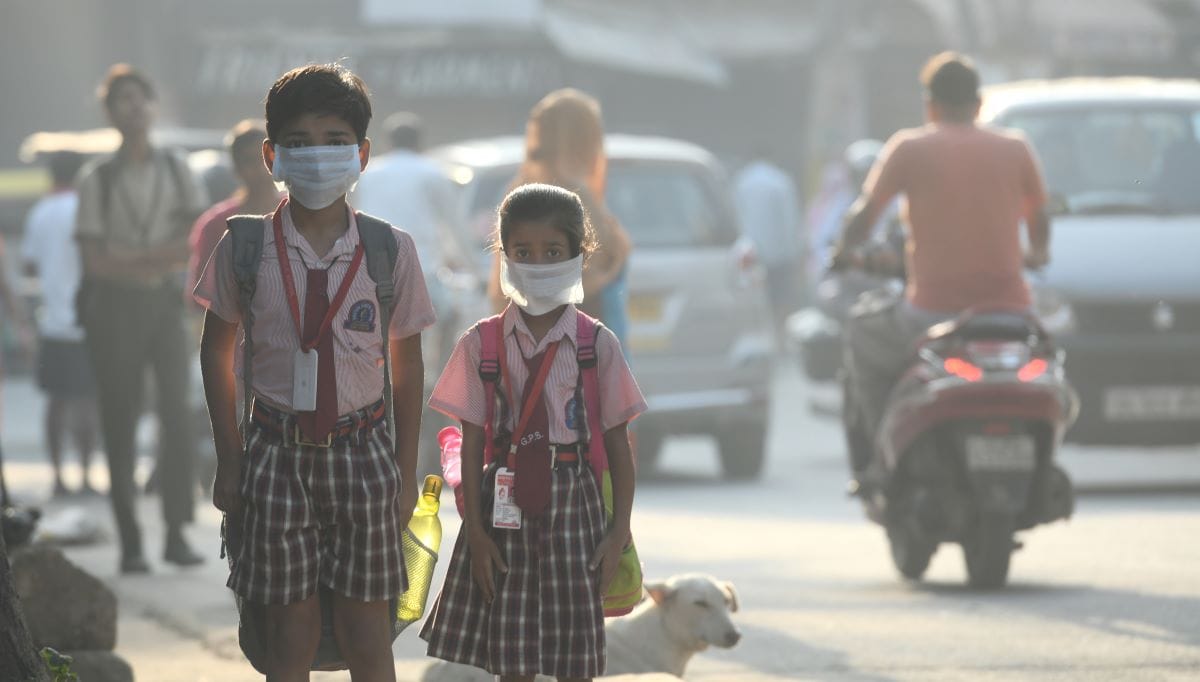According to a Training Manual for Community-Level Training on Air Pollution and its Impact on Children’s Health provided by the National Program on Climate Change and Human Health, 2022, it has been found that 1 in every 3 children in Delhi suffer from impaired lung functioning.
As stated by the Clean Air Fund, of the world’s 30 cities with the worst air pollution, 21 are in India. Every year, around 2 million deaths are caused by air pollution in India.
Air pollution is one of the biggest environmental health risks. By definition, air pollution is the contamination of ambient air by chemical species in such concentrations and for such duration that is harmful to general health. It is a silent killer that contributes to various other health complications. Exposure to PM (particulate matter) 2.5 can cause deadly illnesses such as lung cancer, stroke, and heart disease.
In 2019, 1.67 million deaths were attributable to air pollution in India, accounting for 17.8 per cent of the total deaths in the country. A diverse range of pollutants exist in the increasingly urban and industrialised world. The most common sources of air pollution include vehicular emissions, coal-based power plants, fossil fuel consumption in industries, and some agricultural activities such as fertiliser application and stubble burning.
Causes of air pollution
Air pollution cannot be solely attributed to industrialisation. It can be distinguished between indoor and outdoor. Outdoor pollution includes but is not limited to, combustion of fossil fuels, such as lignite coal, industrial processes, open burning of waste, waste incineration, agricultural practices, construction, demolition, motor vehicles and transportation, and natural processes, such as dust storms and volcanic eruptions. Worsening climate is only said to contribute to this pollution by ground-level ozone and wildfires.

Indoor pollution is caused by gas pollutants including benzene and formaldehyde, which can be emitted from activities like cleaning or gas cooking as well as from products including deodorants and body sprays, candles, furniture, and furnishings. In a study conducted by Dyson, through the data collected by air purifiers, it was found that “the air inside homes during winter was found to be 15 per cent worse than outside. Across India, the indoor air gets 41 per cent dirtier during winters, and in Delhi, it’s even worse at 48 per cent. In India, the most polluted time inside was between 7 am and midday.”
In India, the curve for air pollution goes up from mid-October. Festivities and pollution go hand in hand around this time of the year. Beginning with the pre-Diwali celebrations with oil light diyas and cracker bursting, followed by the North India-wide stubble burning, a practice which has been going on for a long time.
A future being robbed of health
Air pollution poses a threat to children’s health more than others. Globally, it was the second leading health risk factor after malnutrition in 2021. Air pollution from household, waste-related, traffic-related, landscape fires like wildfires, secondhand smoke and dust, and sand storms are some of the major sources of air pollution harming children’s health. Children are physically more exposed to pollution for various reasons.
A child’s respiratory system has narrower airways, which means the entry of toxic air pollutants can more potently affect the tissues there and cause inflammation. Children are still in their growing phase and breathe more rapidly than adults, taking in the air relative to their body weight.

The constantly deteriorating condition of the atmosphere also puts them at a high risk indoors as well as outdoors. Children spend a significant amount of time indoors, exposing them to indoor pollution and gas pollutants created due to household activities. Similarly, young bodies require a sufficient amount of physical activity, which exposes them to outdoor pollution such as dust and vehicular pollution. Avoiding outdoor exposure to such pollutants deprives them of formative and developmental exercises such as being physically active and indulging in childhood frolicking and sports.
Their developing organs, such as brains and lungs, make them physiologically more vulnerable than adults to air pollution. Air pollution has been known to negatively affect neurodevelopment and cognitive ability and can trigger asthma and childhood cancer. Another serious condition is Chronic Obstructive Pulmonary Disease (COPD), an umbrella term used to describe progressive lung diseases including emphysema, chronic bronchitis, and refractory (non-reversible) asthma. The risk of other chronic diseases such as cardiovascular disease increases highly with increased levels of pollution and exposure to the same.
Deprivation of the depressed
Although there is limited research on the correlation between exposure to air pollution and socioeconomic communities in India, there have been attempts at it.
A recent study published by Springer Nature shows evidence that PM2.5 levels are higher in districts with a higher percentage of lowered caste or Scheduled Caste (SC) residents, young children, and households in poor condition. The officially designated socioeconomic disadvantaged communities, such as the scheduled tribes, scheduled castes, and other backward classes, were found to be living in less urbanised districts with a high percentage of SCs, women, children, persons with disabilities, and households without toilets.
Children belonging from vulnerable populations are more exposed and at risk because of a lack of proper housing and constant exposure to pollutants in their environments.
Children belonging to vulnerable populations are more exposed and at risk because of a lack of proper housing and constant exposure to pollutants in their environments. Moreover, children from vulnerable populations are affected even worse because of their lack of resources, access to healthcare, and deprived living conditions. Children from disadvantaged communities are exposed to air pollution since birth, or even before in cases of prenatal exposure, leading to underweight babies and stunted growth. The adverse effects are not limited to physical growth and have an impact on mental and cognitive growth as well. In extreme cases, prolonged exposure to severe air pollution and toxic gases causes the death of infants.
Being from a backward class, their household already struggles to make ends meet, wherein poor healthcare highly diminishes their possibility of being elevated from a depressed class. Their capability and capacity are affected physiologically and mentally, creating a cycle of suffering.
To summarise, Indian cities have been topping the charts of polluted cities worldwide, and yet no strong steps are being taken to mitigate an environmental risk. Ironically, we pollute the very air that gives us life. Rather, we find the risks being actively passed onto our future generations. Policies, guidelines, and programs are formulated; budgets are allotted (Rs. 11211.13 crores were allotted to the National Clean Air Programme) but lack the sense of urgency that this matter requires. And then we go back to the farms and lands and set fire to stubble in hopes of grain when there will be no air to breathe.
About the author(s)
Ketki (she/her), is a curious political science student who loves exploring new ideas, places, and cultures. She has gained diverse work experience across event logistics, exhibitor relations, and research, always eager to learn something new. She has a soft spot for cats. In her free time, she loves to travel, listen to wildly different music and watch thrillers.





